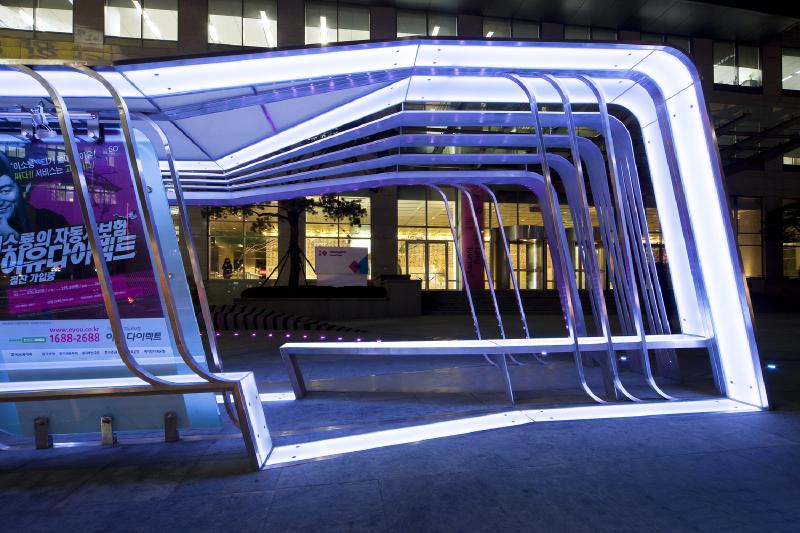Streets are a part of a city in which several flows coexist. The flows and pauses of automobiles and pedestrians occur on a continuous basis. Such flows occur at different speeds, respectively. The movement and stopping of buses and the walking and pause of pedestrians make one realize that bus stops coexist with these several flows. The design of the Bus Shelter started from this perspective of the flows and pauses of automobiles, pedestrians, and the acts of waiting and standing in line. The act of waiting for the bus is a passive and boring activity. In contrast with such acts and with the changes taking place with the passing of time, it creates special everyday life. The design started with a functional box accommodating the function of a shelter. This box has a direction and slants to one side. The next stage is divided into ten loops of varying lengths, widths, and intervals, to accommodate different functions. Finally, the frame is reinforced to secure structural sturdiness.
The Flow Bus Shelter is designed as a street creature rather than street furniture. A street furniture is static and passive while a street creature creates everyday life together with participating pedestrians. He lives on the street with daily agenda. He sleeps at night, wakes up in the morning and works in daytime. His LED lighting strips expresses his daily activities and creates everyday life with pedestrians.
The Flow: Bus Shelter Prototype started as a part of Seoul City’s “City Gallery Project.”


